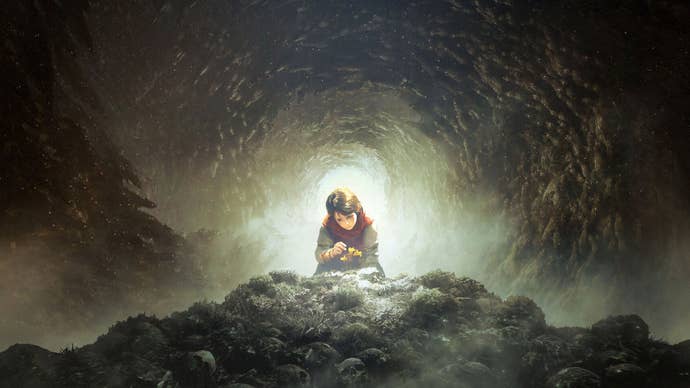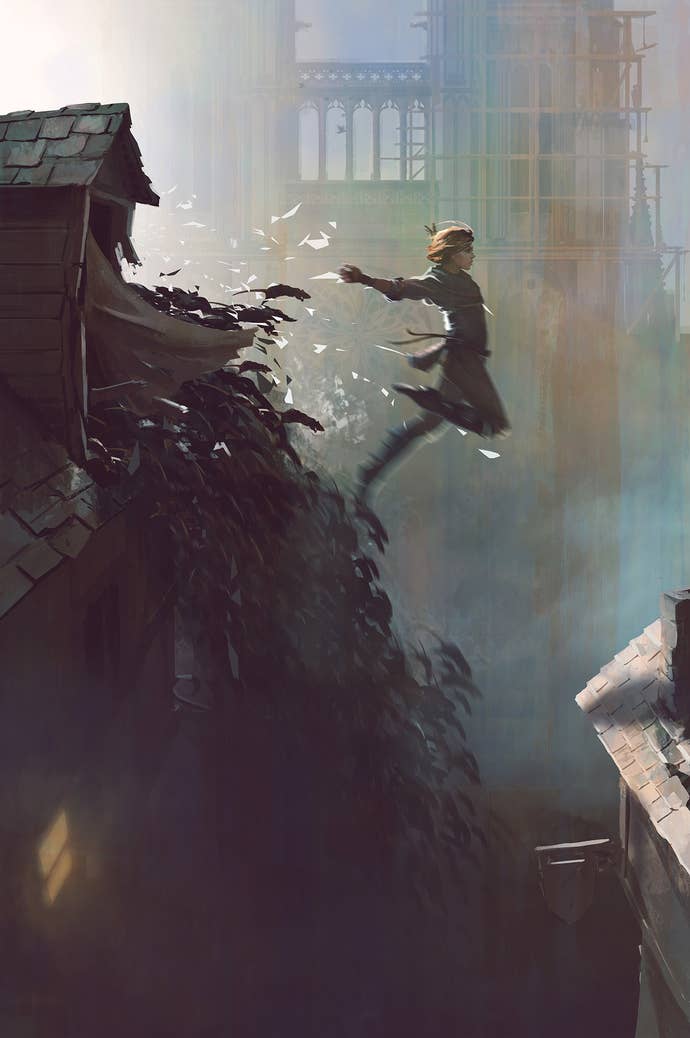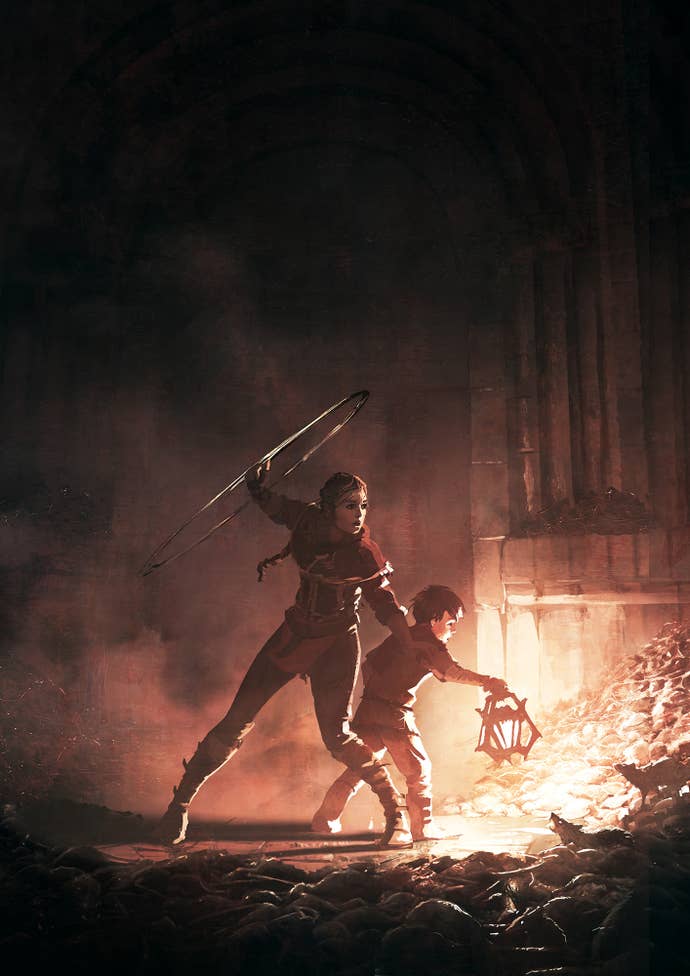There was nothing tangible.
All there were, were hopes and ideas, swirling around.
And the process of materialising them into something: it’s a fragile thing.

There’s no certainty that what will come out the other end will even survive that process.
AndA Plague Tale: Innocence, it turns out, very nearly didn’t.
For one dread-filled moment near the end of the originally-allotted development time, the Plague Tale project nearly failed.

It’s a moment series director Kevin Choteau understandably doesn’t like to recollect.
Some people call them mock reviews but there’s nothing fake about the feedback they give.
And these reviews did not hold back.

“The game was a mess,” Choteau says.
It was as if Asobo was being told, “You know nothing, guys.
What have you started?

You cannot assume that!
You don’t know how to do those kinds of games.”
Equally low was the team’s morale.

“The team was quite destroyed by this fake review,” he says.
So, as the leader of the team, he made the decision to do something drastic.
“We’ve done I think the most dangerous thing that we could do: we stopped everything.
We stopped everything - development, polish, debug, everything.
And we took a step back - everyone took a step back.
And we’ve redone everything that we’ve pointed out.”
What was redone was nothing short of everything.
But Asobo had to.
“It was our first baby and we wanted to be proud of it.
“It’s called Fragments.”
Up until that point, it had been making Kinect and Pixar games.
And Fragments awakened something inside Asobo: a desire to do more.
The tone, the maturity, the morality: it all spoke to the people working there.
“We talked about this game for months and months and months,” Choteau says.
A fair few of the Asobo team were already parents and loved the way children saw the world.
Rats weren’t yet part of the discussion.
The team didn’t know when or where it wanted to set the game.
This was when the history books came out.
Still, though, the rats - as part of the game idea - weren’t there.
“Everyone knows that.
Everyone thinks that the rats were the origin of the disease and the spreading of the disease.
It’s something that we should use.”
And the moment Asobo did use rats, everything fell into place.
Here was a stealth game where you couldn’t easily hide in the dark because another threat lay there.
Here was a stealth game with light and dark systems.
Here was a game with an iconic setting and a point of difference.
The incident with the internal review had shaken the team.
“We were absolutely lost, actually,” Choteau says.
Maybe there’s something that delights there,” they thought.
Maybe it’s working?"
It motivated the team for the final push.
“It was stunning for us.
I don’t know what to say.
More importantly for Asobo, this represented a starting point.
The response was positive.
To be clear: there were no plans for a sequel before A Plague Tale: Innocence came out.
But the ideas for a sequel had always been there.
And as the months rolled on, the decision became clear.
In September 2019, work on A Plague Tale 2 began.
“We knew we wanted to do a nice sequel, not a lazy one,” Choteau says.
I’m sure any of you who have played A Plague Tale: Innocence can definitely relate to that.
Not for the first time, Asobo had to redo everything.
Here it is again, in big and bold:THERE ARE SPOILERS AHEAD.
The ending was decided, surprisingly, way back during the writing of Innocence.
“It has been decided when we were writing Innocence,” Choteau says.
Everything was written down and every threshold they need to cross was there.
“And it was super hard,” he says, “because of course we love this character.
Hugo is our tiny brother, our child, and we love him, we deeply love him.
This is why he is the best candidate also,” he adds, with a wry smile.
But not everyone on the team was happy about it.
Maybe we can do something else - maybe we can kill Amicia!
Maybe we can kill no one…' He laughs recalling the memory.
“No, it’s not a bargain,” he would tell them.
“We don’t exchange Amicia for Hugo.
Hugo is supposed to die.
He will die.”
Deciding it would happen was the easy part; working out how to do it was another matter.
The final chapter took the longest work of any section in the game.
Would he die alone?
Would you simply watch?
Everything the team tried didn’t feel satisfying or work.
For Asobo, it was perfect.
“It’s closing the loop.”
Hannan still isn’t anywhere near old enough to legally play the games.
Those roles of Amicia and Hugo must mean an awful lot to them.
The day of recording the final sequences came.
Choteau laughs when I ask how Hannan reacted.
“It was funny for him!”
And the take was good and the mic cut off, and he was laughing.
And I said, ‘What happened?’
He said, ‘My mum is watching me.
She’s crying, and it’s funny.”
McBurney was the total opposite.
“She was destroyed,” Choteau says.
“She was in pieces.
Not enough tissues in the booth.
During this sequence, she was herself, basically, living the death of her little brother.”
The voice director at Side was not speaking at all.
There’s nothing to say," he says.
“We are just crying together and we wait a minute for it to pass.”
He says he can’t thank her enough for the work she’s done.
“She has really carried our story,” he says.
“She has changed the way we wrote Amicia because she was able to do everything.
And it’s super-easy to work with her.”
“They are our fuel,” Choteau says, “we are doing the sequel thanks to them.
We don’t want to disappoint them.”
“The team was like, ‘Oh!
Oh,’ he says, and laughs.
It was frustrating for the team.
We fail for a bad reason.
Critics have bad words for legitimate reasons, but bad ones.
It was disappointing.”
Why the technical performance was overlooked on some platforms, he genuinely doesn’t seem to know.
And I don’t know why, I can’t explain it.
“But we fight back!”
In general, though,A Plague Tale: Requiemhas been a success.
It all begs the question, naturally, of whether there will now be A Plague Tale 3?
“I don’t know,” Choteau says.
“I don’t know.
He pauses, thinking of what to say.
“I don’t know if the team is ready.
I don’t know if we have a good thing to say right now.
And I’m not doing some lies there, I’m just being honest.
“For us, it’s hard to figure out right now,” he adds.
“It’s not in the pipe.”
So whether or not it’s A Plague Tale 3 that comes next, rest assured something will.
“I’m doing everything to make it not stop, every day,” Choteau says.
Long may it continue.